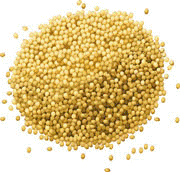International Sorghum and Millet Collaborative Research Support Program (INTSORMIL CRSP)

INTSORMIL Impacts and Bulletins
Date of this Version
6-8-1997
Document Type
Article
Citation
1999 EMBRAP A and INTSORMIL
Abstract
In June 1996, several of us had the opportunity to see sorghum ergot in Brazil and the damage that the disease can do. We saw severe damage in seed production plots and witnessed the pain that seed producers had to go through to deal with this new problem. There was a wide spread scare in the sorghum community in the Americas because of the infamous reputation of the disease in causing damage in seed production fields. As a silver lining, we also observed first hand, the excellent research program that the Brazilians had in place. It became apparent that all of the sorghum researchers, seed producers and regulators of plant pathogens worldwide needed to come together to study and review this disease. There could be no better venue for such a Global Conference than Sete Lagoas, Brazil. Hence this meeting was proposed and with the support and assistance of the Director of Sorghum and Maize Research (CNPMS) of EMBRAPA, this meeting has been arranged. At the time the meeting was proposed, the disease was known only in a few countries but it has spread today to include much of the Americas and Australia. Obviously, we can no longer avoid the disease, we can only learn to live with it and manage it in future growing seasons. It has been my pleasure to work with the research leaders on ergot at EMBRAPA in developing this conference, to receive cooperation from many of the global leaders on ergot to bring their knowledge to the conference and financial support from the American Seed Trade Association, as well as the support and encouragement from Texas A & M University and INTSORMIL in recognizing the importance of our collaboration on combating sorghum ergot.
In this conference, we will learn from the experiences of countries where ergot had existed for a long time while examining the ergot situation in newly invaded countries. We have several dedicated papers dealing with the biology of the pathogen, the epidemiology of the disease, and disease management strategies. We will also chart the movement of the disease and plot ideas on how to collaboratively work to lessen the impact of sorghum ergot in the Americas.

